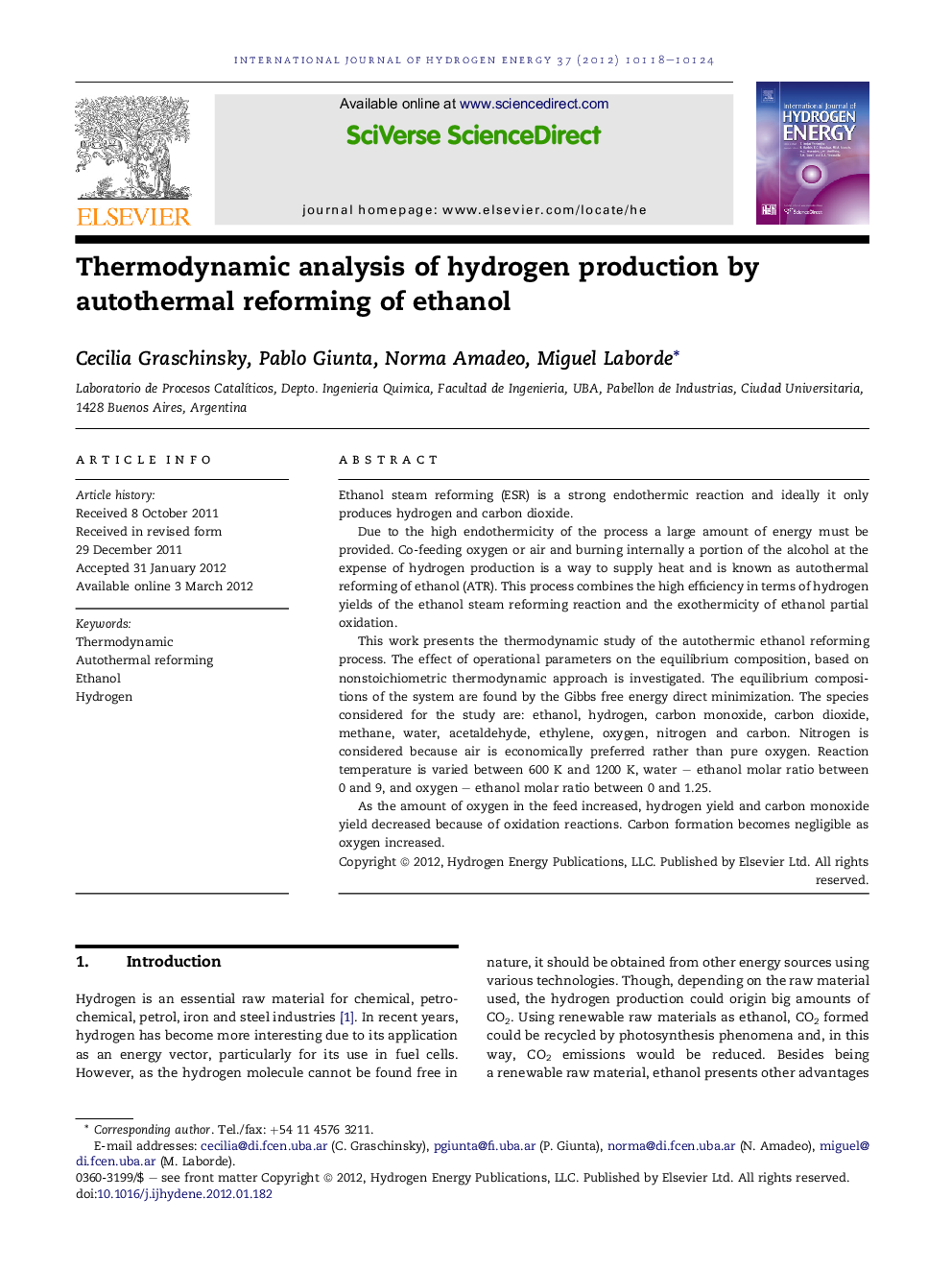| کد مقاله | کد نشریه | سال انتشار | مقاله انگلیسی | نسخه تمام متن |
|---|---|---|---|---|
| 1275198 | 1497556 | 2012 | 7 صفحه PDF | دانلود رایگان |

Ethanol steam reforming (ESR) is a strong endothermic reaction and ideally it only produces hydrogen and carbon dioxide.Due to the high endothermicity of the process a large amount of energy must be provided. Co-feeding oxygen or air and burning internally a portion of the alcohol at the expense of hydrogen production is a way to supply heat and is known as autothermal reforming of ethanol (ATR). This process combines the high efficiency in terms of hydrogen yields of the ethanol steam reforming reaction and the exothermicity of ethanol partial oxidation.This work presents the thermodynamic study of the autothermic ethanol reforming process. The effect of operational parameters on the equilibrium composition, based on nonstoichiometric thermodynamic approach is investigated. The equilibrium compositions of the system are found by the Gibbs free energy direct minimization. The species considered for the study are: ethanol, hydrogen, carbon monoxide, carbon dioxide, methane, water, acetaldehyde, ethylene, oxygen, nitrogen and carbon. Nitrogen is considered because air is economically preferred rather than pure oxygen. Reaction temperature is varied between 600 K and 1200 K, water – ethanol molar ratio between 0 and 9, and oxygen – ethanol molar ratio between 0 and 1.25.As the amount of oxygen in the feed increased, hydrogen yield and carbon monoxide yield decreased because of oxidation reactions. Carbon formation becomes negligible as oxygen increased.
► A thermodynamic study of the autothermal reforming of ethanol reaction.
► Equilibrium compositions were calculated by Gibbs free energy minimization method.
► Carbon was included in the set of species considered.
► Main products are H2, CO, CO2 and CH4.
► Carbon formation decrease with water and/or oxygen increase.
Journal: International Journal of Hydrogen Energy - Volume 37, Issue 13, July 2012, Pages 10118–10124